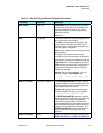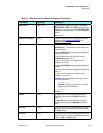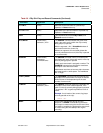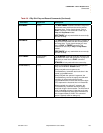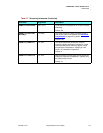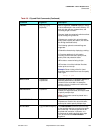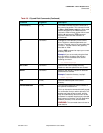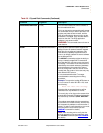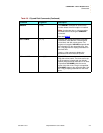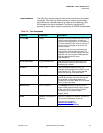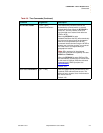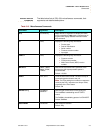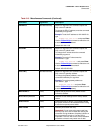
COMMAND LINE INTERFACE
Commands
350-9047 v3.0.1 DGy Model 201x User’s Guide 109
. . . . .
LiStCLIPs [-R] [-L] [-F] [-P]
[clipname]
With no argument, LiStCLIP displays a listing
of all recorded clips in the current directory. For
each clip, the real time, elapsed time, and
recording length are listed.
Clips are listed chronologically with the earliest
clip at the beginning of the list.
Clipname can contain Unix style wild cards,
and is used to qualify the search (not valid for
the -P flag described below).
The following optional command flags are
supported:
-F Identifies directories by displaying a trailing /
-L Provides additional clip information
including: record frame rate, quality mode,
quality level and protection status.
-R Provides a recursive listing of clips.
-P Provides a list of the individual files that
make up the current clip.
Example: Show a listing of the file “jnew“
displaying details about frame rate and quality
level. Type:
lsclip -L jnew
RENameCLIP <clipname1>
<clipname2>
Renames clipname1 to clipname2. Relative or
absolute pathnames are allowed. Only
renames to the same disk. An attempt to
rename a clip to a location on the other disk
will return an error.
PROTECTCLIP <clipname> Write protects named clip. Clipname can
contain Unix style wild cards, and may be used
to specify multiple clips.
Note: Event marks cannot be placed into a
protected clip.
UNPROTECTCLIP <clipname> Removes write protection from named clip.
Clipname can contain Unix style wild cards,
and may be used to specify multiple clips.
RealTimeSeek
<yyyymmddhhmmss[xxx]>
The RealTimeSeek command cues the DGy
to the specified real time recording time within
the current clip. The time argument can be
provided with resolution in seconds, or in
milliseconds by adding the final three digits
(xxx) at the end of the RealTimeSeek
argument.
Table 6-8 Clip and Disk Commands (Continued)
Command Argument Description




